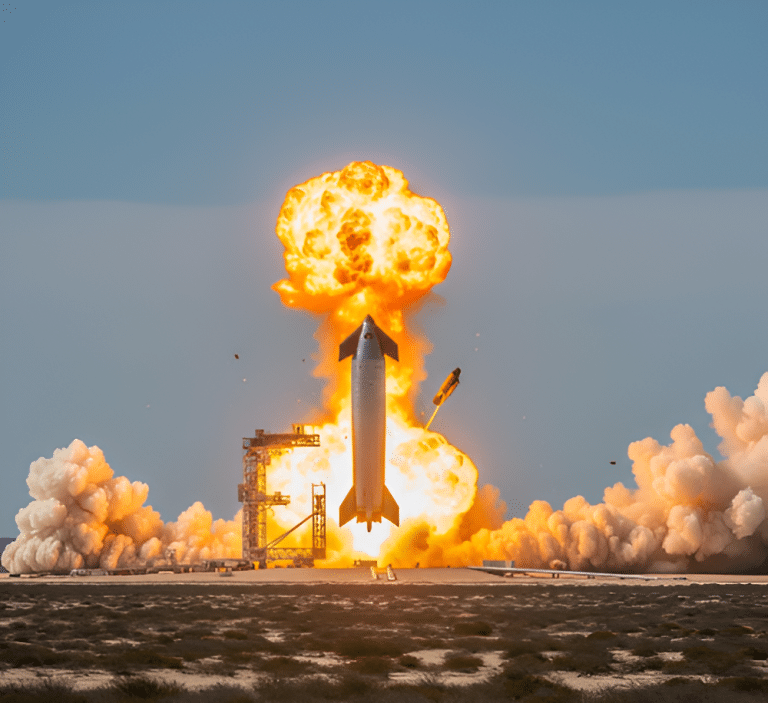The latest test flight of the innovative SpaceX Starship ended in yet another massive explosion on May 27, 2025, the third-straight date when the prototype mega rocket failed to achieve its stated mission objectives.
The uncrewed Starship, from Starbase, Texas, experienced a propellant leak some 30 minutes after launch and subsequently lost control. This, as the company texted, was a “rapid unscheduled disassembly” at what should have been reentry into Earth’s atmosphere over the Indian Ocean. There have been no reports of injuries to people or damage to public property.
Starship Flight Encounters New Trouble
The ninth integrated flight test of the SpaceX Starship sought to push the envelope for its reusable space system. Even though the Starship upper stage reached a suborbital trajectory, issues arose almost immediately thereafter. Specifically, a key payload bay door experienced a failure to fully open, therefore preventing deployment of the simulated Starlink satellites.
Soon afterwards, a propellant leak was reported, which began an uncontrolled spin of the vehicle, and hence, no reentry options were possible, leading to breakup. The issues of the descent continued for the first reuse of the super heavy booster, finally crashing into the Gulf of Mexico. For information regarding the satellite Internet service that Starlink intends to deploy, consider our guide: Starlink Internet: What You Need To Know In 2025.
Iterative Development by SpaceX
SpaceX adopts an iterative development process that emphasizes frequent testing and a swift return of information from failures. The prior two Starship test flights in January and March also ended in explosions due to a harmonic response in the propulsion system, in the former case, and a hardware failure in a Raptor engine in the latter case.
Each one of those anomalies yields important information for the engineers so that they can understand the model and increase reliability. The CEO of SpaceX, Elon Musk, expressed that the last flight gave a “lot of good data to review,” notwithstanding the setback. The firm intends to hold a greater frequency of launches in the next few months, aiming for another flight every three to four weeks. More information on specific issues concerning this test flight is outlined by The Economic Times here.
Future of the Starship Program
Even though Starship recently suffered another failure, according to the long-term strategies of SpaceX, it occupies a position at the heart of space exploration. The huge vehicle will be designed to carry crew and cargo to Earth orbit, the Moon, and eventually to Mars, carrying up to 100 people on interplanetary trips.
NASA intends to utilize its variant of Starship to land astronauts on the lunar surface under Artemis missions. The iterative development process SpaceX utilizes provides an interesting case study in agile risk management, as discussed by Readinow.
If you are interested in breaking-edge technology and performance across domains, you may want to check out our guide to Unlock Top Video Gaming Gear Now. SpaceX continues to soldier on, seeking to attain reliability for human spaceflight.








